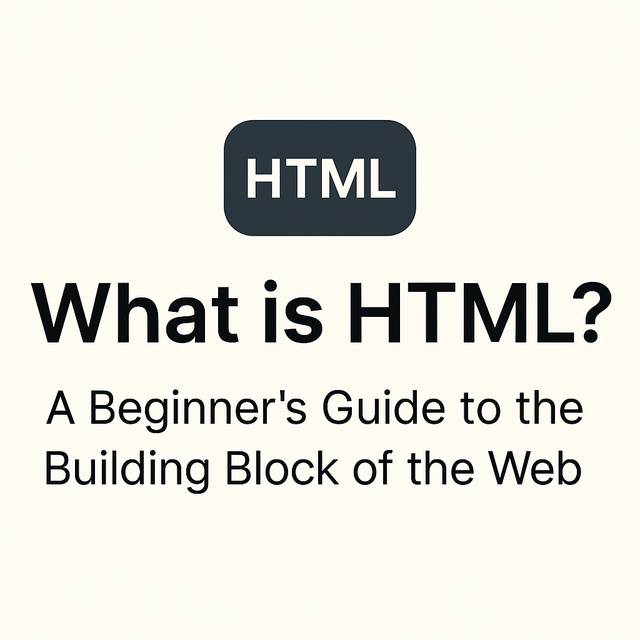- Published on, Time to read
- 🕒 2 min read
What is HTML? A Beginner’s Guide to the Building Block of the Web

If you’ve ever wondered how websites are made or what powers those pages you visit daily, the answer starts with something called HTML. Whether you’re a beginner looking to dive into web development or simply curious about the web’s foundation, understanding HTML is essential.
In this blog post, we’ll explore what HTML is, why it’s important, and how it works — all in simple terms that anyone can grasp. So, let’s get started!
What Does HTML Stand For?
HTML stands for HyperText Markup Language. At its core, it is the standard language used to create and design web pages. Think of HTML as the skeleton of a webpage — it provides the basic structure on which everything else, like styling and interactivity, is built.
- HyperText means the text contains links that you can click to jump to other pages or sections.
- Markup Language means it uses tags to define elements and how they appear or behave on the page.
Why is HTML Important?
When you open your favorite website, what you see is a combination of various technologies working together. Among these, HTML is the foundation. Without HTML:
- Your browser wouldn’t know how to display text, images, or links.
- Web pages wouldn’t have any structure or meaningful content.
- The internet as we know it would not exist.
In simple terms, HTML tells your browser what content to show and how to organize it. It is the essential starting point for creating any website or web application.
How Does HTML Work?
HTML uses a system of tags to define different parts of the webpage. These tags are enclosed in angle brackets like <html>, <head>, <body>, and more. Tags usually come in pairs, with an opening tag and a closing tag, for example:
<p>This is a paragraph.</p>
☕Did you like the article? Support me on Ko-Fi!